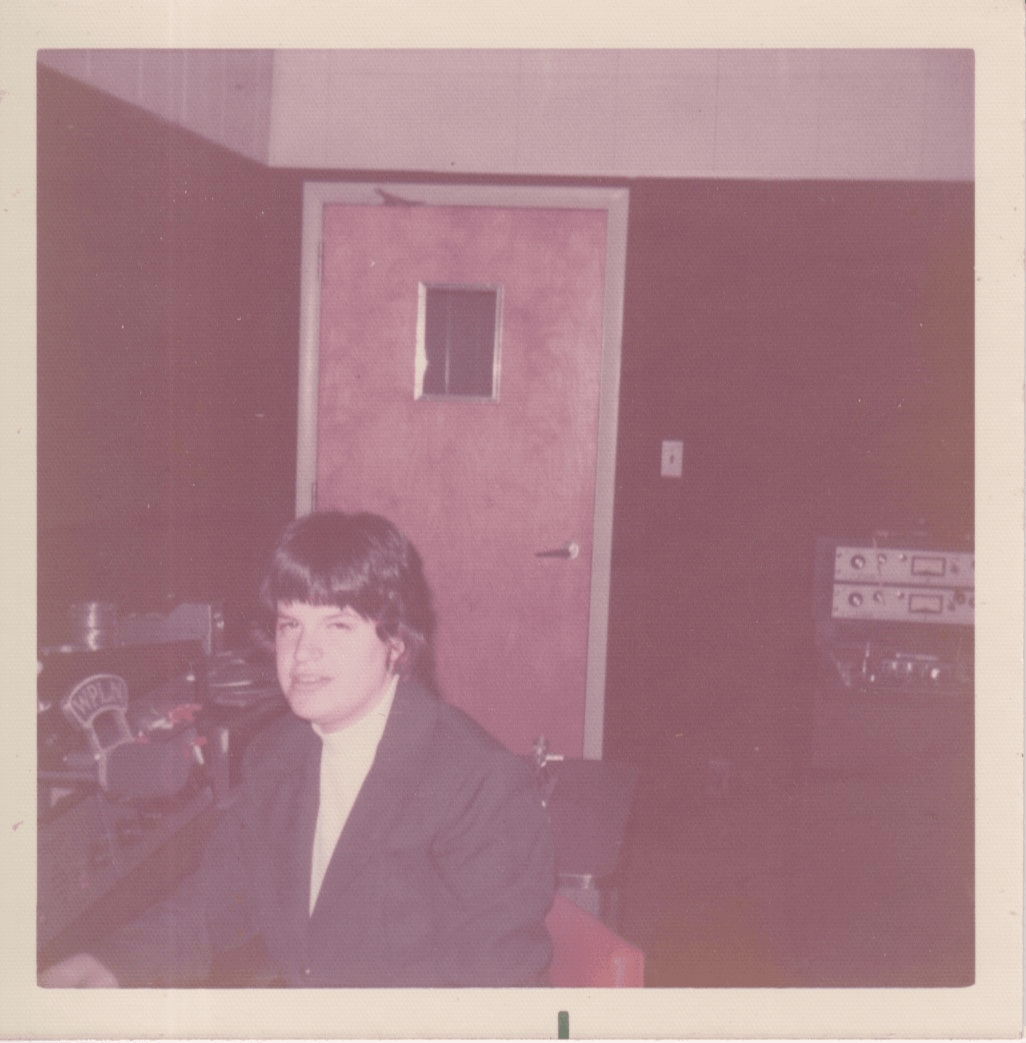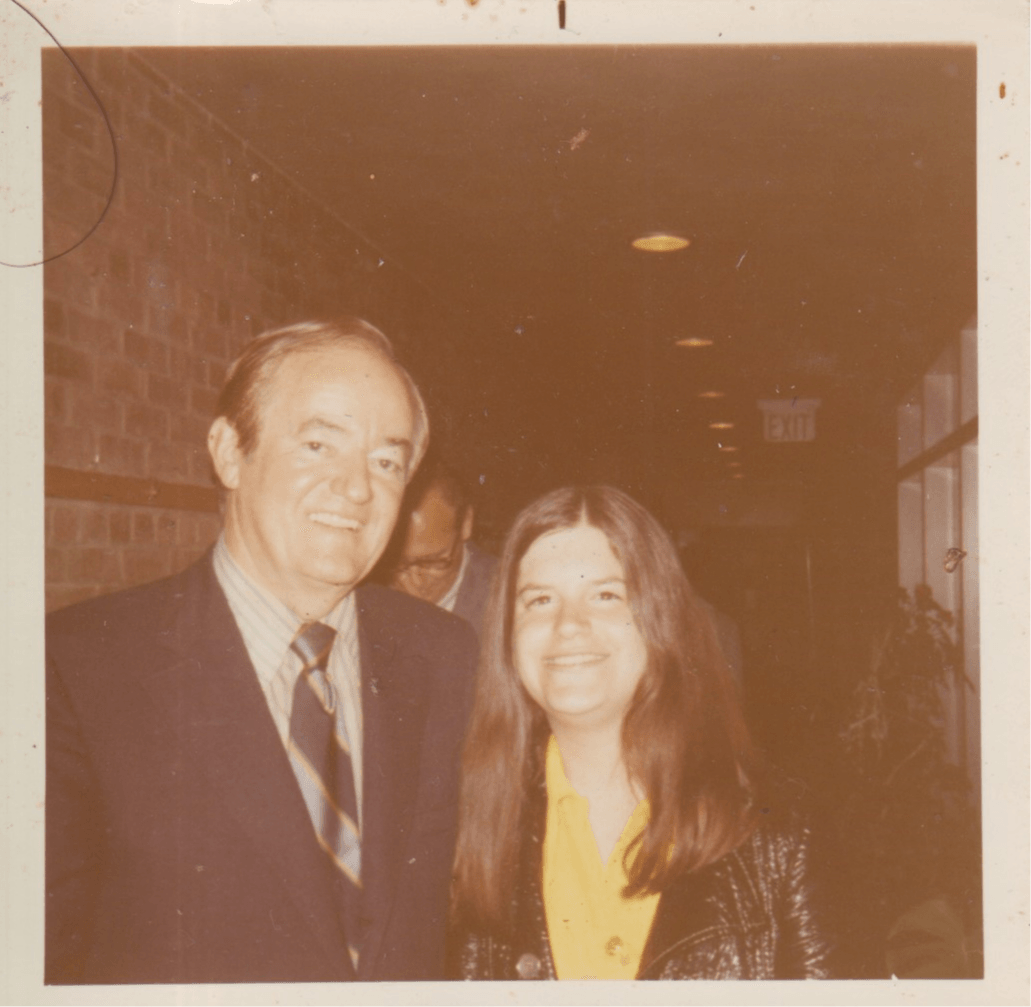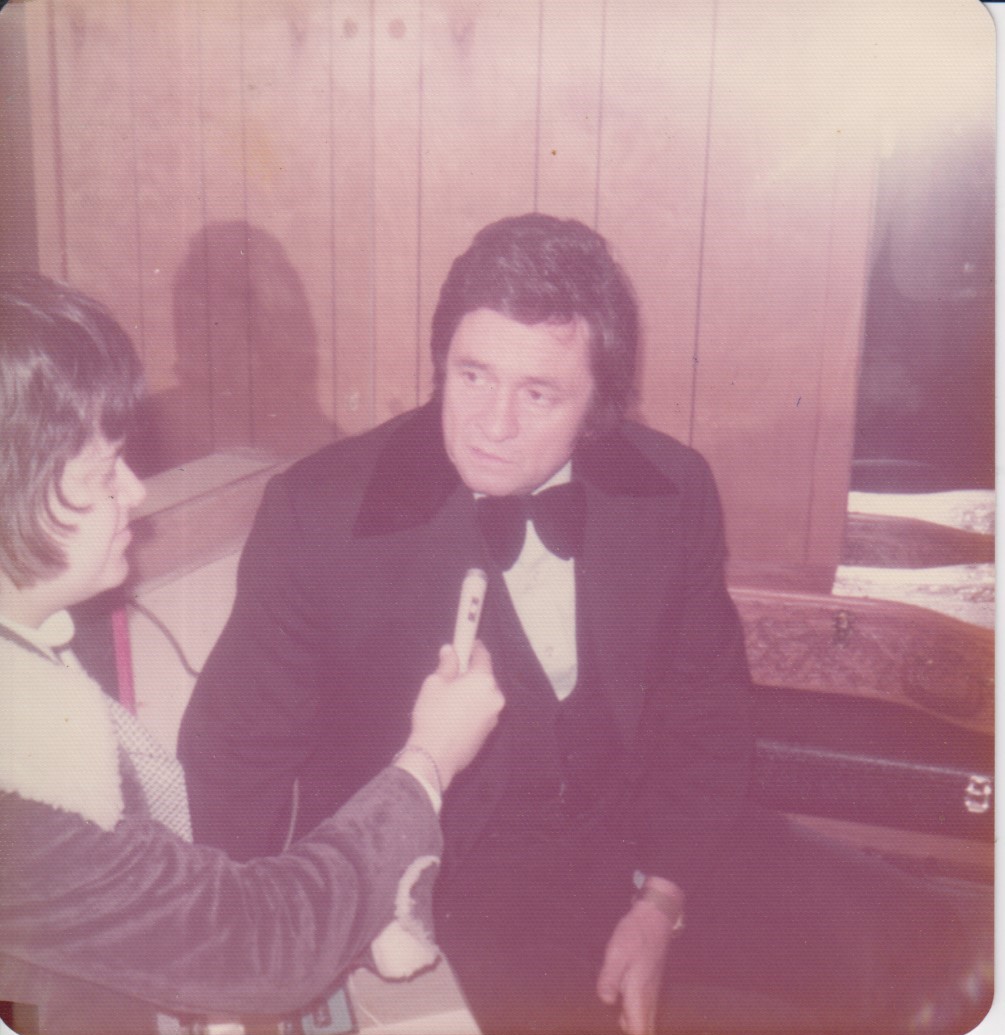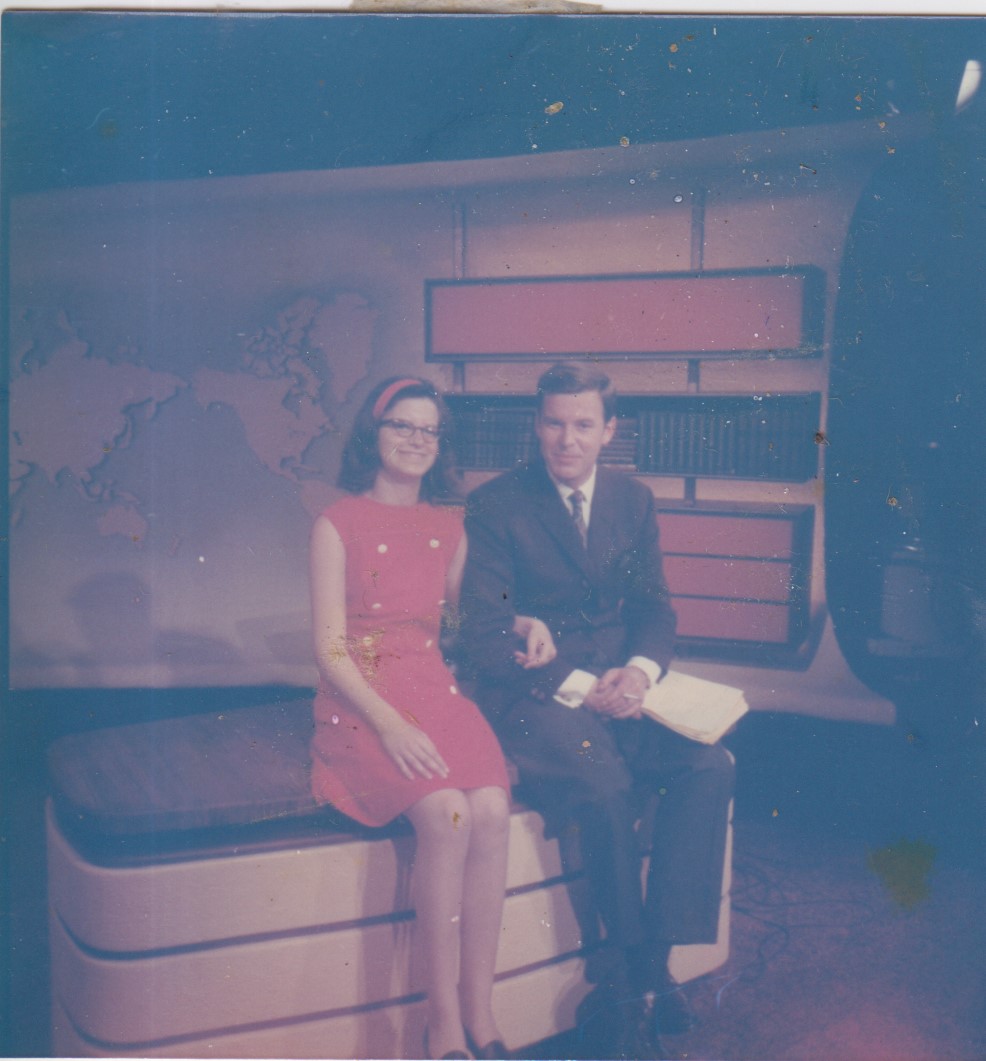

Today we’d like to introduce you to Stacy Harris.
Stacy, we appreciate you taking the time to share your story with us today. Where does your story begin?
Dubbed “The Doyenne of Music Row,” (by Nashville Banner reporter Bruce Honick), in recognition of my unmatched half-century+ career documenting Nashville’s country-music industry, I am an internationally-known hyphenate; i.e. published author, broadcast journalist, music historian, ghostwriter, music industry and popular culture analyst, celebrity journalist, ethnomusicologist, academician, technical writer, stage and screen actress, axiologist and/or, put concisely, polymath.
The publisher/executive editor of “Stacy’s Music Row Report,” the Nashville Business Journal recognized me for pioneering Music Row coverage on the Internet (in its April 17-21, 1995 edition).
A Minnesota native, who began my print and broadcast journalism career while a student at suburban Minneapolis’ St. Louis Park High School, I worked summers at local country and talk radio stations and as a columnist for the Upper Midwest Country & Western News-Scene.
A broadcasting major, I graduated from the University of Maryland six months early, having fulfilled the requirements of a college diploma, thanks not only to my college credits earned during a high school summer break at Kansas’ College of Emporia but spending the summer between my junior and senior years at UMD studying at Nashville’s Vanderbilt University. During that first trip to Music City, I also availed myself of an opportunity to join other future Music Row leaders as a participant in NARAS-sponsored seminars and workshops designed precisely for that purpose.
A lifelong love of politics brought me to the University of Maryland’s College Park campus, just 10 miles from Washington, D.C., and resulted in plans to pursue a career in government; plans bolstered by a recommendation from one of my professors, Kathleen Hall Jamieson, for a White House internship. (Having begun my broadcasting career working “off-the-books” at Minneapolis’ talk [WLOL] and country-music [KTCR-FM] radio stations during my teenage years, my first big “get” was my University of Maryland poetry professor Eugene McCarthy, whom I awakened and coaxed out of his Leamington Hotel room for an impromptu interview I conducted with the senator and 1968 presidential candidate in the Leamington’s KTCR-FM radio studio some floors below.)
However, the promise of a job opportunity at Nashville’s WSM Radio, the home of the Grand Ole Opry, led to a change in career plans and relocation; a move that increasingly made sense to me as I learned that there was enough politics in the music business to keep me intrigued.
While my dream of full-time employment at WSM never materialized- my time there was sporadically spent working “off the books” answering phones on Ralph Emery’s (and later Hairl Hensley’s) “Opry Star Spotlight” overnight shift- other doors opened. The host of Nashville’s NPR affiliate WPLN’s “Pointe Three” [sic] program, I branched out to syndicated radio opportunities with the NASCAR Radio Network and MJI Broadcasting before creating a position for myself as a Nashville-based ABC Radio News contributor. (I created a similar position for myself as a Newsweek stringer.)
Drawing on my extensive radio background, I assisted in the resurrection of Radio Free Nashville by assuming the informal role of consultant and Board member.
I also branched out into television, as a scriptwriter for The Nashville Network’s “I-40 Paradise” series, becoming a TNN entertainment news contributor and eventually landing a listing in the prestigious online Internet Movie Database (IMDB), courtesy of my roles in front of, and behind the camera, be they in movies, television or commercials.
My many “firsts” include constructing a series of country-music-themed crossword puzzles for Inside Country Music magazine and writing the first published country-music books for children.
Simultaneously published by Lerner Publications, Comedians of Country Music and The Carter Family: Country Music’s First Family led to London’s Carleton Books commissioning me to write The Best of Country: The Essential CD Guide (simultaneously published in the United States by HarperCollins’ Collins Books imprint) that resulted in the updated Classic Country. I also contributed entries to the Tennessee Historical Society’s Tennessee Encyclopedia of History & Culture.
My contributions have acknowledged in books written by Kitty Kelley, Taylor Hagood, Alanna Nash, Robert Oermann, Jean Roseman, John S. Dunne, Diane Diekman, Carl Perkins with David McGee, co-authors Lol Henderson and Lee Stacey, Roberta T. Herrin, George Ella Lyon and Sheila Quinn Oliver, B. Lee Cooper and Rebecca Condon, Eileen Sisk, Ivan Tribe, Steve Eng, Mary Hurd, Tom C. Armstrong, Barbara Pruett, Stephen Miller, Dave DiMartino, Anne Fletcher, Staff Sgt. Barry (“Ballad of the Green Beret”) Sadler, Warren B. Causey, Marc Leepson, Mary Hance, Rick Marschall, Carol Fradkin, Mark K. Baumann, Michael Freemark, Peter La Chapelle, Frank Young, Wesley Hyatt, Paul Maher, Jr., and by Adam Compton in the Texas State Historical Association’s The Handbook of Texas Online.
Ryan Carlson Bernard cited Stacy’s work in the footnotes of The Rise and Fall of the Hillbilly Music Genre: A History, 1922-1939, a thesis presented to East Tennessee State University’s Department of Liberal Studies “in partial fulfillment of the requirements” for obtaining an ETSU Master’s Degree in Liberal Studies.
Music scholars have praised my role as a music historian and academician: Notably, Kosher Country: Success and Survival on Nashville’s Music Row, published by Southern Jewish Historical Society (and excerpted in the UK’s Country Music People) has been recognized by Stanford Graduate School of Education’s Berman Jewish Policy Archive, the American Jewish Archives Journal (Vol. LXI 2007, Numbers 1 & 2), academia.com and Missouri State University’s Department of English Researcher Mara W. Cohen loannides [sic].
A past president of the Nashville (later National) Entertainment Journalists Association (NEJA), my other professional membership include/have included American Women in Radio and Television (AWRT), The Country Music Association (CMA), the Academy of Country Music (ACM), the National Press Club, the Society of Professional Journalists (SPJ), the National Academy of Television Arts & Sciences (NATAS), the Creative Community for Peace and MENSA.
I began my online career as a country-music columnist when I wrote an opinion column for Ben Cunningham’s nashville.com bulletin board. With the advent of user-friendly expansion of the Internet, I tweaked and retitled my column Stacy On Line and the column became a feature of Music Row-based Nashville Music Connection/Country On Line.
As the buzz about what, decades later, remains Nashville’s only independent source of country-music news and informed opinion grew, I broadened my horizons. I added music and book reviews to the mix of what became Stacy’s Music Row Report and my enterprise caught the interest of Geocities where my expanded Report was featured before I accepted an offer from Doug Hass to partner with roughstock.com.
When Hass sold Roughstock the new publisher urged me to stay on, presenting me with a contract. The “catch” was that I would have to forfeit my copyright; something I refused to do.
Another door opened when I partnered with Steve Brooks to create countrymusicreport.com.
While my partnerships afforded me increased visibility and income, by the time Brooks became suddenly seriously (and shortly thereafter fatally) ill, the experience I had long since attained gave me the confidence to strike out on my own.
Regrouping, I established an even more lucrative subscription-based form of instantaneous news alerts and expanded proprietary content while, as time and readers’ revenue from site-linked Amazon purchases commissions permit, updating the Amazon Associates’ “free site” at stacyharris.com as a “loss leader.”
As such, Stacy’s Music Row Report has no competition. Where other country-music websites, blogs and newsletters are beholden to Music Row’s gatekeepers, the Country Music Association, the Country Music Foundation, the industry’s publicists and advertisers in a position to dictate content, by virtue of my proprietary business model I am uniquely immune from such constraints.
The result is that Stacy’s Music Row Report remains Nashville’s only independent source of country-music news, reviews, investigative journalism, original content and informed opinion.
While Stacy’s Music Row Report is reading best suited to those whose comfort level is not threatened by debunking of the country-music industry mythology permeating Music Row, I welcome feedback, especially from those who disagree with me.
Happy to print such divergent opinions as long as they are not offered anonymously (though I withhold tipsters’ names upon request), Stacy’s Music Row Report’s official website links to separate pages of unsolicited feedback from industry members, media and a world-wide audience of fans.
Music Row’s only currently active multimedia print and broadcast journalist, who has continuously covered the country-music industry for over a record-setting half-century, I remains fearless. I am most proud of the following articles linked to Stacy’s Music Row Report : “What the Country Music Foundation Doesn’t Want You to Know,” “The Country Music Association: What is it Afraid of?,” “How Bill Ivey’s Letter to the Editor Bought Up to $250,000 Worth of Silence,” “Kirt Webster PR Six Years After Its Dissolution: An Update” (further updating Stacy Harris’ original article, “Kirt Webster: The Demise of Webster PR: An Unprecedented Investigation, Sex Scandal & Update: The Status of Austin Rick’s Book, Venmo Prostitution?, A Leaked WTVF-TV Internal Memo, A Veiled Threat…” and “Tom T. Hall’s Cause of Death: A Premonition, Autopsy Report and the Resistance to Setting the Record Straight.”
Stacy’s Music Row Report was also the first news service to report Rock and Roll Hall of Fame member and Country Music Hall of Famer Brenda Lee’s January 28, 2025 “gray divorce” filing at age 80 from her husband of nearly 62 years, Charles Ronald “Ronnie” Shacklett.
I pride my on fairness and producing a website where those who come for the few must prepare to face the many.
I’m sure it wasn’t obstacle-free, but would you say the journey has been fairly smooth so far?
Not at all. Music Row’s history of misogyny is well-documented.
It is sad that women who are now the beneficiaries of we who insisted on breaking the glass ceiling, and suffered the consequences as we created opportunities for ourselves, are unaware of their benefiting from reforms that became legal demands only after decades of our being forced to work twice as hard as our male colleagues and later counterparts in order to be taken seriously, our failing to receive equal pay for equal (or more) work and other sacrifices.
Back in 1993, years prior to #MeToo becoming a movement, I was speaking out about Music Row’s abuse of authority and the obstacles to gender parity. I memorialized some of those thought in a magazine article titled ”Nashville’s Power Women.”‘ The Country Fever article, and the blowback that ensued, can be accessed at https://stacyharris.com/article.html .
Appreciate you sharing that. What else should we know about what you do?
At a time when many journalists are afraid of job security, courtesy of AI, it’s a not a concern to me.
While others taking credit for my work continues to be an occupational hazard ( https://stacyharris.com/TomHall.html ), AI cannot break news as I have done and will continue to do, it cannot provide the exclusivity that brings me the most satisfaction of my reporting. Nor can it distinguish between force-fed, publicist-driven rewritten press releases and the original reporting and informed opinion I provide based on decades of experience and immunity from the wrath of advertisers, publicists and the 501 (3) Cs that often succeed in applying pressure resulting in the dictating of content.
What was your favorite childhood memory?
In August,1963, three months before the innocence of elementary school children like myself and life as we knew it was wiped away by the assassination of President Jack Kennedy, Dad took this Minnesota Twins fan to Camera Day at Metropolitan Stadium.
There, prior the game, Twins fans were allowed onto the field where we had our pictures taken with our favorite players.
I was a little confused when Jimmie Hall posed with his arm around my shoulder. It felt strangely good thanks to what I later figured out were hormones reacting to a good-looking athlete posing with a pre-teen girl who would soon show more obvious signs of puberty.
Contact Info:
- Website: https://stacyharris.com/
- Other: https://muckrack.com/stacyharrisnashville/portfolio and https://www.imdb.com/name/nm4239537/?ref_=nmbio_ov_bk
















